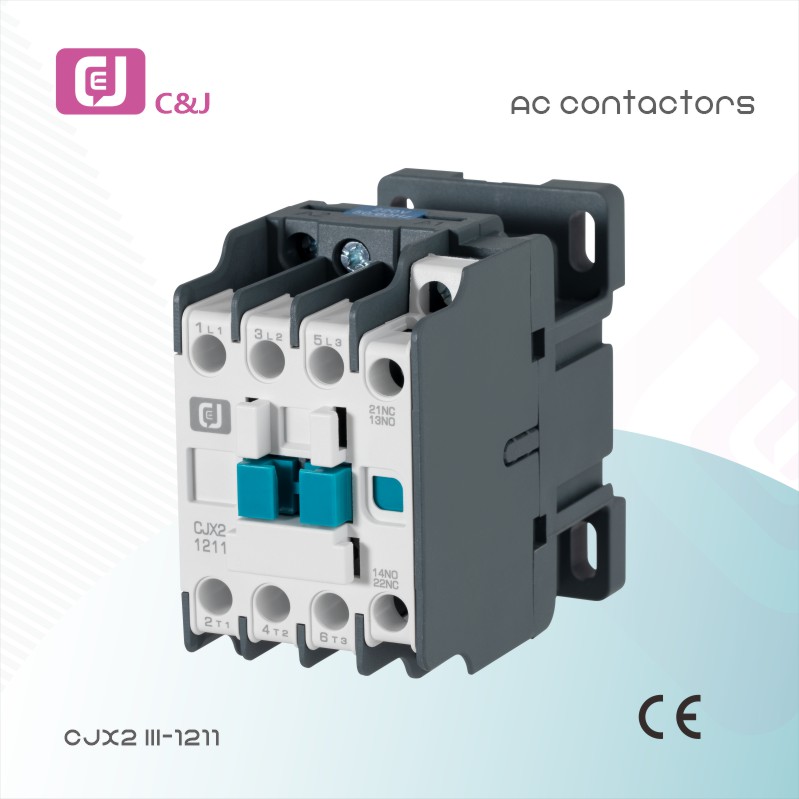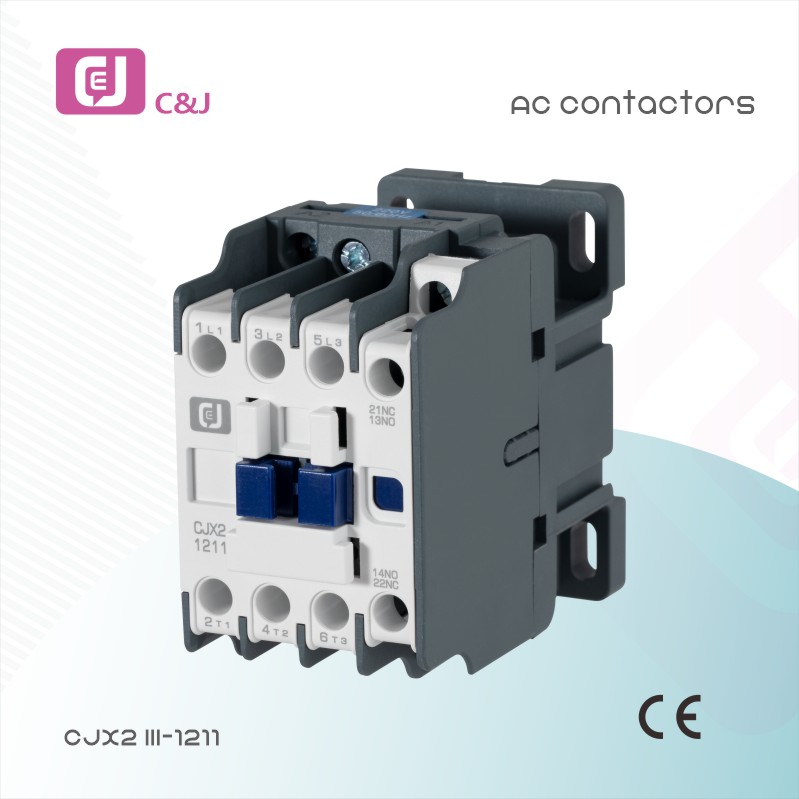Understanding AC Contactors: Critical Components in Electrical Systems
AC contactors are crucial components in electrical systems, particularly in industrial and commercial applications. These electromechanical devices are designed to control the flow of electrical current to various devices, such as motors, lighting systems, and heating units. Understanding the function, types, and applications of AC contactors is crucial to understanding their importance in modern electrical engineering.
What is an AC contactor?
An AC contactor is essentially an electrically operated switch. It controls the power supply to electrical loads, ensuring the safe and efficient operation of high-voltage equipment. Its primary function is to connect or disconnect a circuit, essentially switching the current on or off. This is particularly important in applications where loads require high power, as it enables remote control and automation of electrical systems.
Working principle of AC contactor
AC contactors operate on the principle of electromagnetism. When current flows through the contactor coil, it generates a magnetic field that attracts a movable armature. This armature is connected to a set of contacts that close or open the circuit. When the contacts are closed, current flows to the connected load; when the contacts are open, the current is interrupted.
AC contactors are designed to handle high currents and high voltages for a wide range of applications. They typically have specific voltage and current ratings, so choosing the right contactor for your application is crucial to ensuring safety and efficiency.
Types of AC contactors
There are many different types of AC contactors, each designed for specific applications and requirements. The most common types include:
1. Standard AC contactors: These contactors are used in general-purpose applications, such as controlling motors and lighting systems. They are available in a variety of sizes and ratings to accommodate different loads.
2. Heavy Duty AC Contactors: These contactors are designed for high-load applications, can handle higher currents, and are often used in industrial environments where equipment requires large amounts of power.
3. Reversing AC Contactors: These contactors allow current to flow in both directions, thus controlling the direction of the motor. They are often used in applications where the motor needs to rotate in the opposite direction, such as conveyor systems.
4. Contactor Relays: These devices combine the functionality of contactors and relays to enable more complex control schemes. They are often used in automation systems that need to control multiple loads.
Application of AC contactor
AC contactors are widely used in various industries. Some common uses include:
- Motor Control: AC contactors are frequently used to start and stop electric motors in industrial machinery, HVAC systems, and pumps.
- Lighting Control: In commercial buildings, contactors are used to control lighting systems, enabling centralized control and automation.
- Heating Systems: AC contactors are used in electric heating systems to manage the power supply to the heating elements.
- Automation Systems: In modern automation and control systems, AC contactors play a vital role in managing the operation of various electrical equipment.
In summary
In summary, AC contactors are essential components in electrical systems, reliably controlling the flow of current to various loads. Capable of handling high currents and voltages, they are indispensable in industrial and commercial applications. Understanding the different types of AC contactors and their specific applications can help engineers and technicians make informed decisions when designing and maintaining electrical systems. As technology continues to evolve, AC contactors will continue to play a critical role in ensuring the safe and efficient operation of electrical equipment.
What does an AC contactor do?
An AC contactor is an electrically operated switch that controls the high-voltage power to your air conditioner’s compressor and condenser fan. When your thermostat calls for cooling, a low-voltage signal activates the contactor’s electromagnet, which pulls internal contacts together to complete the high-voltage circuit, sending power to the outdoor unit. This action turns the AC unit on, and when the desired temperature is reached, the low-voltage signal is cut, deactivating the electromagnet and opening the circuit to turn the unit off.
How it works:
- Thermostat Call: When you set your thermostat to cool, it sends a low-voltage (typically 24-volt) signal to the contactor.
- Electromagnetic Action: This low-voltage signal energizes the contactor’s coil, creating a magnetic field.
- Circuit Closure: The magnetic field pulls the internal contact points together, acting like a bridge to connect the high-voltage (220/240-volt) supply to the AC unit’s components.
- Power Flow: Electricity flows from the main power line, through the closed contactor, to the compressor and condenser fan, starting the cooling cycle.
- Circuit Opening: When your set temperature is reached, the thermostat stops sending the low-voltage signal, deactivating the electromagnet. The contacts then spring back open, interrupting the high-voltage circuit and turning the unit off.
Why it’s important:
- Component Protection: By controlling the high-voltage flow, the contactor helps regulate power and reduces wear and tear on the system’s motors.
- Efficiency: A properly functioning contactor ensures the AC unit cycles on and off as needed for efficient cooling.
- Reliability: It plays a vital role in the overall lifespan and reliability of your heating and cooling system.
Post time: Sep-28-2025



